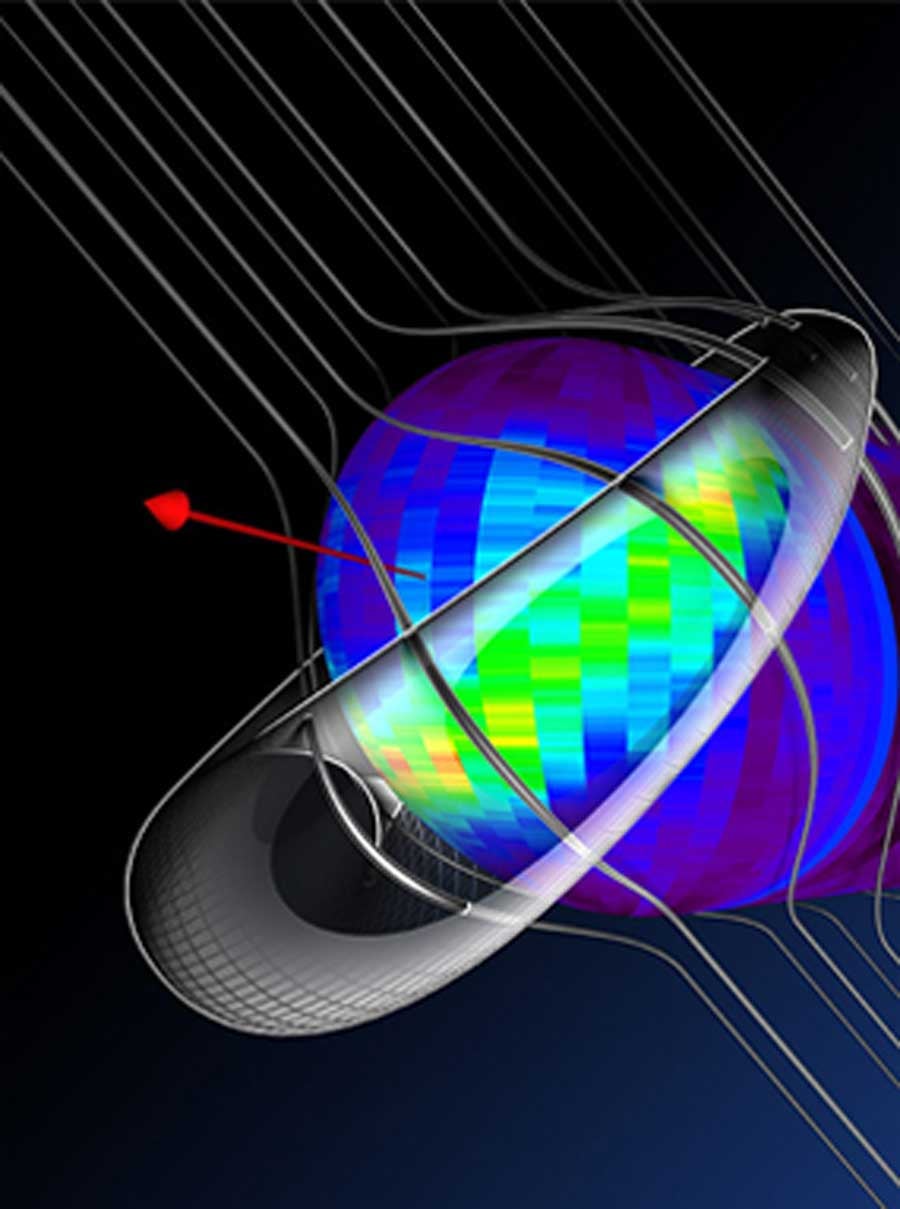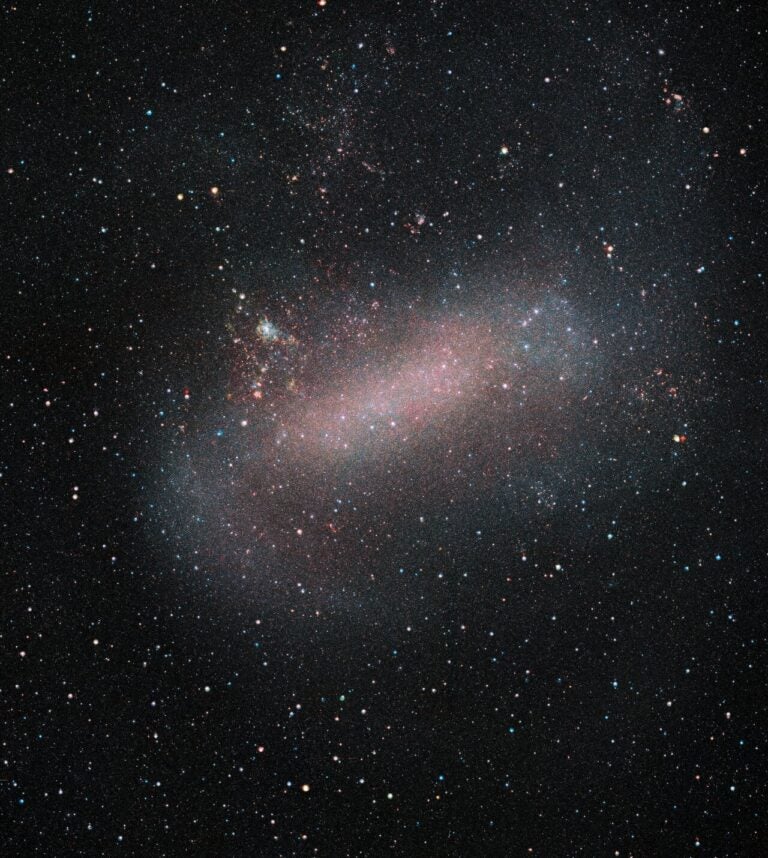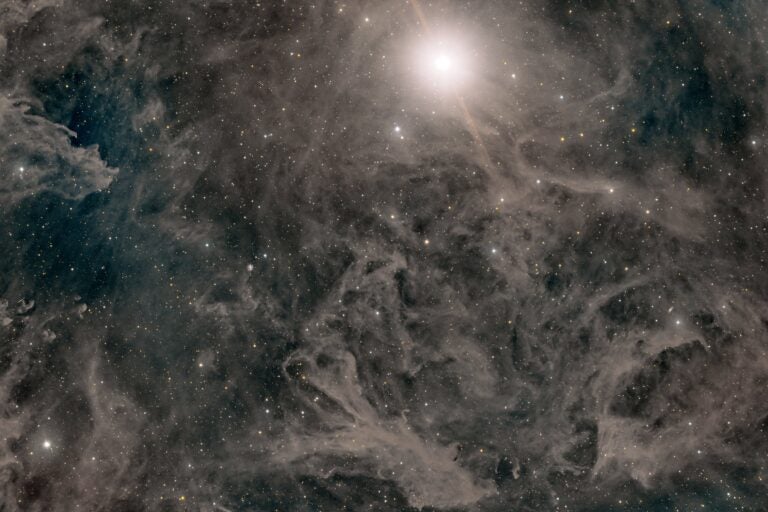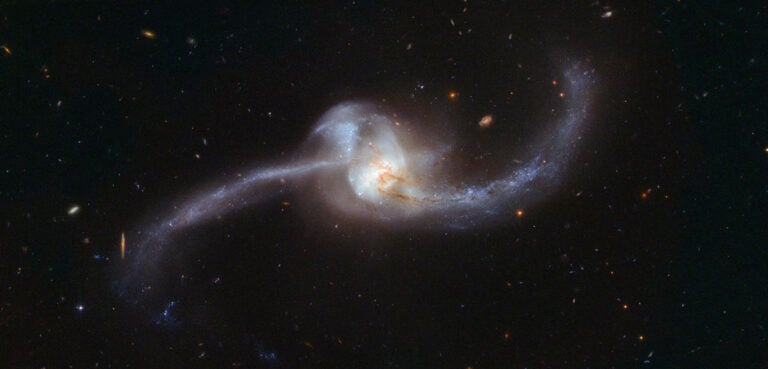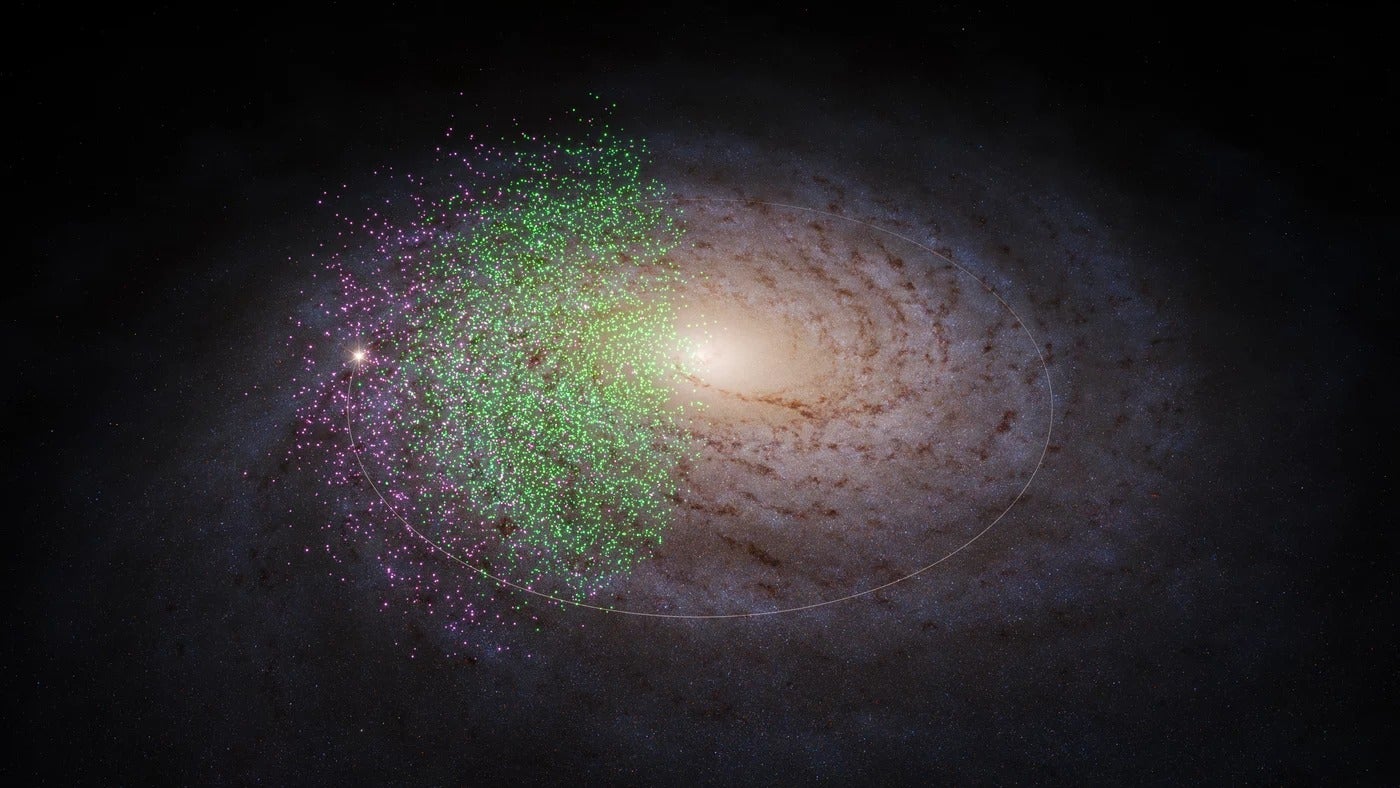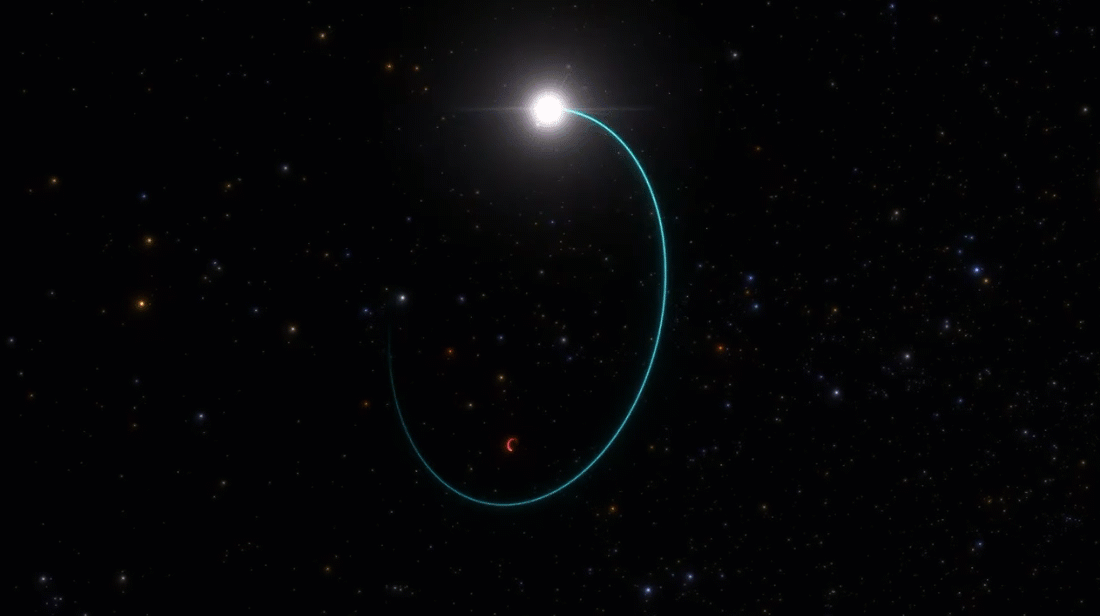Researchers propose a “retention theory” that for the first time explains all the key observations of this astrophysical enigma. “If the theory is correct,” said Nathan Schwadron from the University of New Hampshire, “the ribbon can be used to tell us how we’re moving through the magnetic fields of the interstellar medium and how those magnetic fields then influence our space environment.”
In particular, these strong magnetic fields appear to play a critical role in shaping our heliosphere — the huge bubble that surrounds our solar system and shields us from much of the harmful galactic cosmic radiation that fills the galaxy. This may have important ramifications for the history and future of radiation in space and its impact here on Earth as the heliosphere changes in response to changing conditions in the interstellar medium — the “space between the stars.”
According to the retention theory, the ribbon exists in a special location where neutral hydrogen atoms from the solar wind move across the local galactic magnetic field. Neutral atoms are not affected by magnetic fields, but when their electrons get stripped away, they become charged ions and begin to gyrate rapidly around magnetic field lines. That rapid rotation creates waves or vibrations in the magnetic field, and the charged ions then become trapped by the waves. This is the process that creates the ribbon.
“Think of the ribbon as a harbor and the solar wind particles it contains as boats,” said Schwadron. “The boats can be trapped in the harbor if the ocean waves outside it are powerful enough. This is the nature of the new ribbon model. The ribbon is a region where particles, originally from the solar wind, become trapped or ‘retained’ due to intense waves and vibrations in the magnetic field.”
“This is a perfect example of the scientific process: We observe something completely new and unexpected with IBEX, develop various hypotheses to explain the observations, and then develop mathematical models to try to validate the hypotheses,” said Dave McComas of the Southwest Research Institute in San Antonio, Texas.
Indeed, since the discovery of the ribbon, more than a dozen competing theories seeking to explain the phenomenon have been put forth. The retention theory “checks all the boxes, agrees with all the available observations, and the mathematical modeling results look remarkably like what the ribbon actually looks like,” said Schwadron. “This substantially raises the bar for models that attempt to explain the ribbon.”
Although the retention theory may check all the boxes, the IBEX team is still far from claiming that the ribbon is fully explained. A major test for the retention theory will be watching how the ribbon changes in step with observed changes in the solar wind. “If what we observe matches what the model predicts should happen to the ribbon as the solar wind changes, that will go a long way toward validating the model,” said Schwadron.

